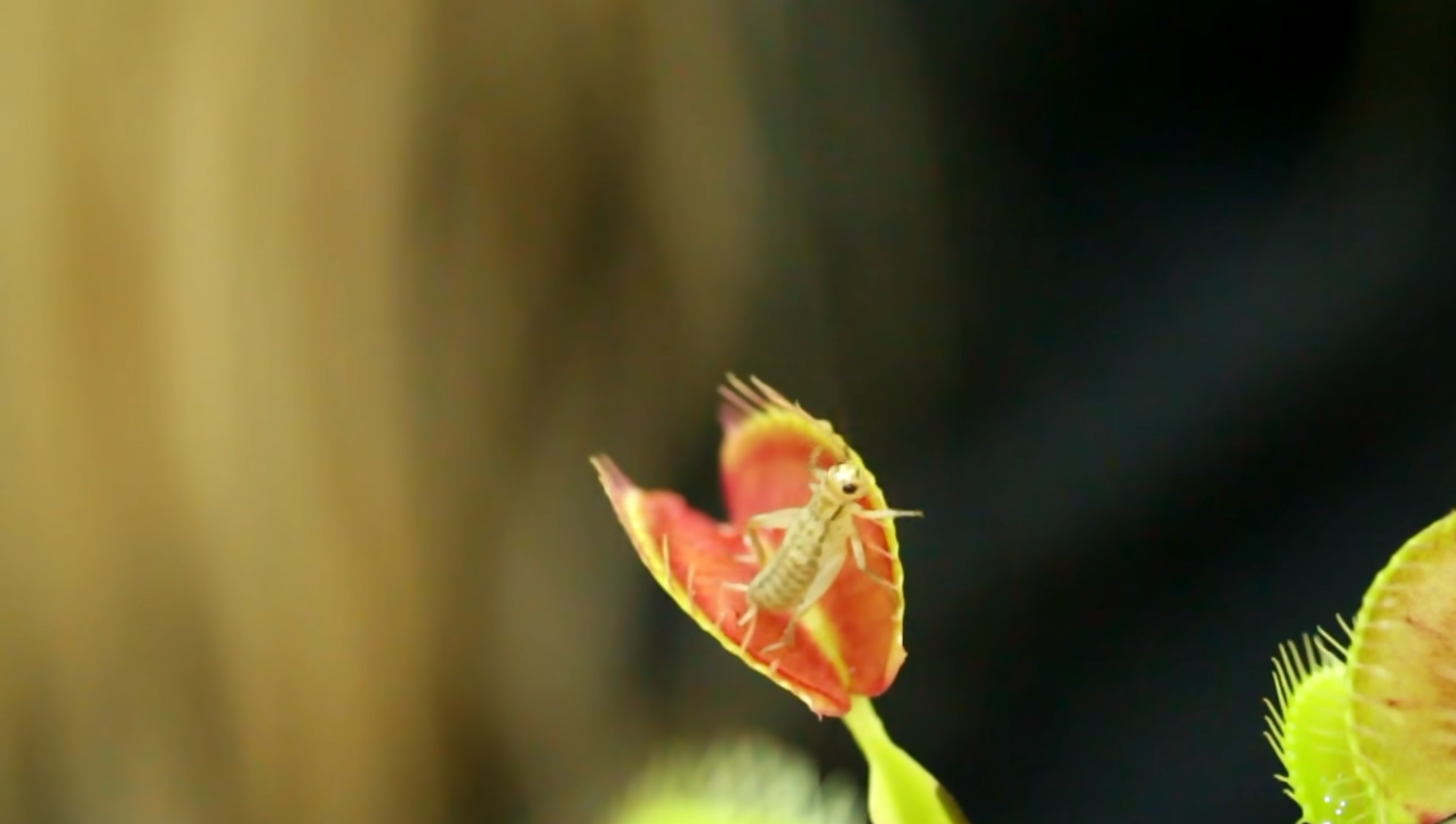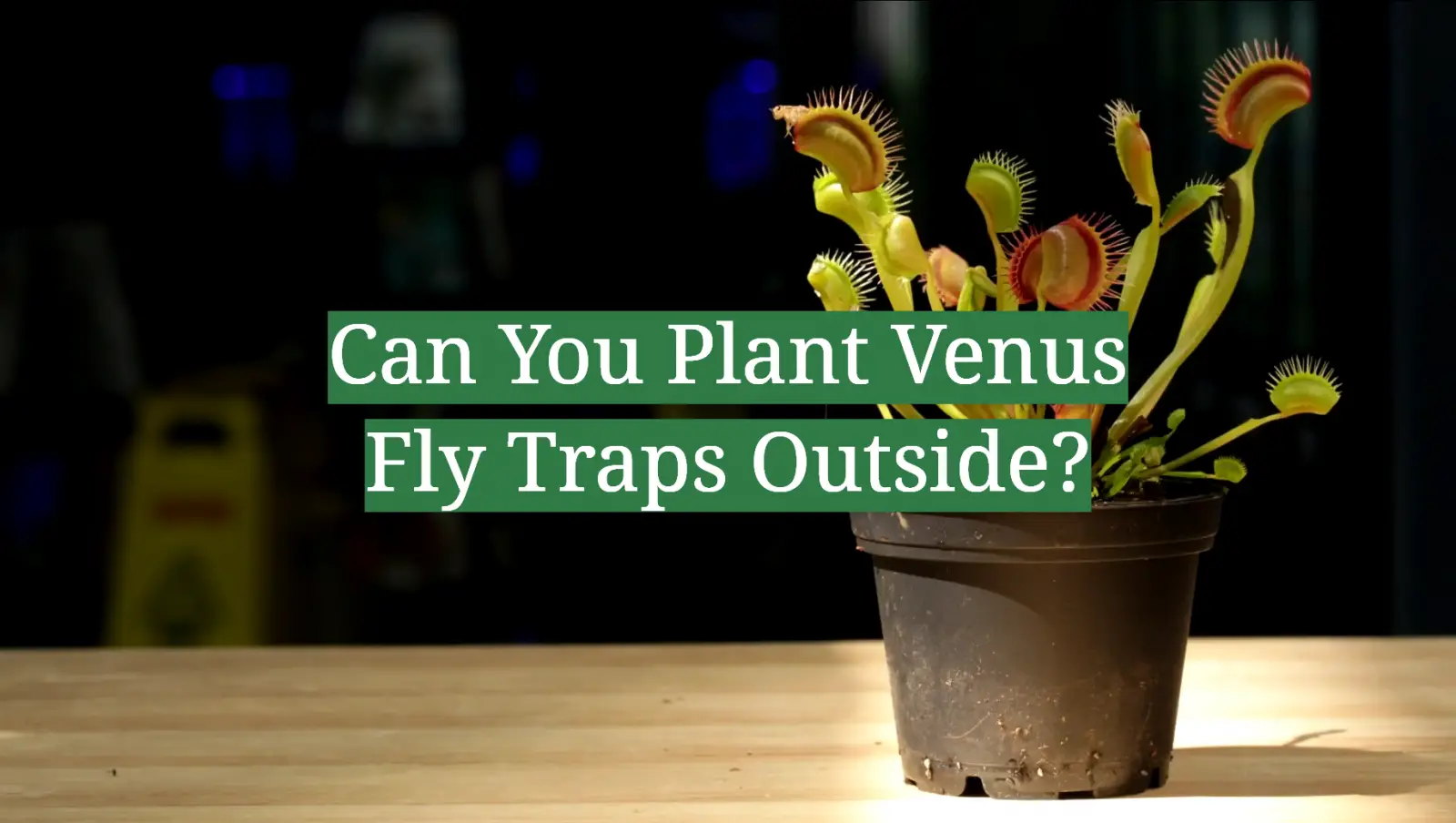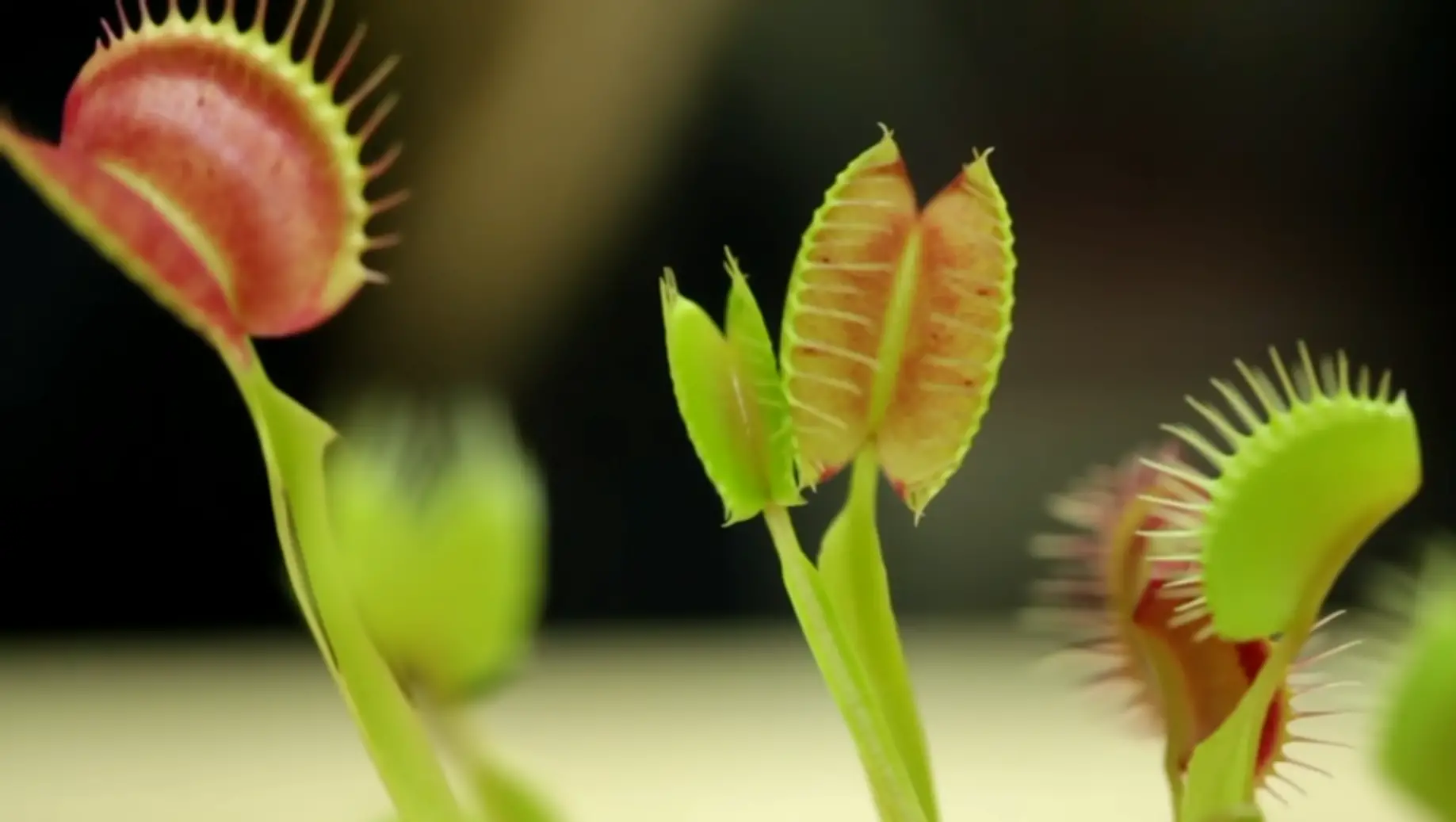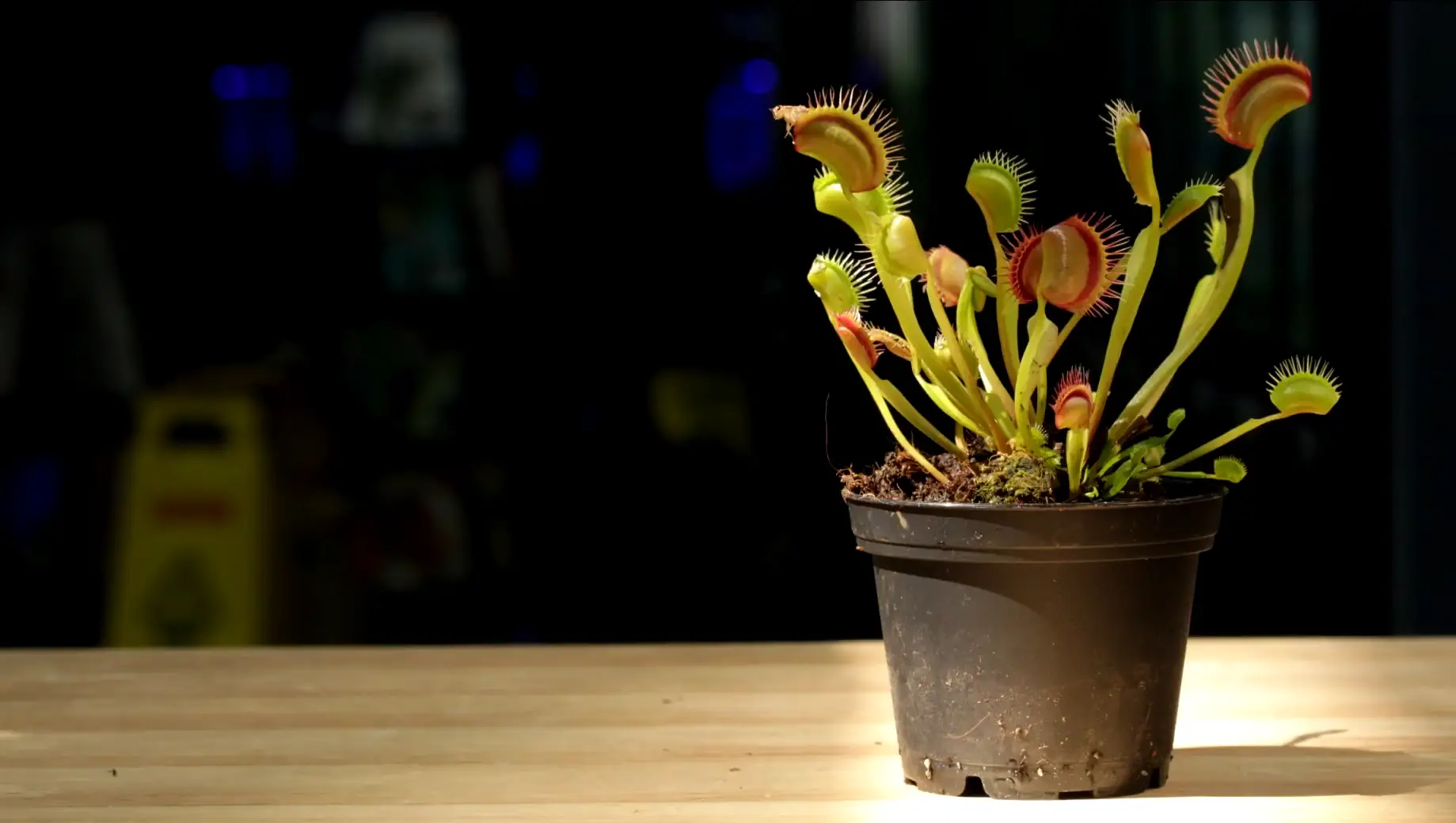If you’re curious about carnivorous plants, Venus Fly Traps are probably the first species to come to mind. These iconic traps are adored by plant enthusiasts around the world who want to test out their green thumb with something a little more unique and challenging. But when it comes to raising these fascinating creatures, one big question always arises: can they be planted outdoors? In this blog post, we’ll take a look at all factors involved in successfully planting Venus Fly Traps outside so that you can figure out if these incredible plants will fit into your garden setup! So read on for some useful tips and advice on how best to care for your outdoor-dwelling fly traps!
Venus Fly Traps
Venus Fly Traps (Dionaea muscipula) are native to the coastal regions of North and South Carolina in the United States, specifically the wet boggy areas. [1]They are the only member of their genus, making them quite the botanical anomaly. Venus plants evolved in a harsh environment where the soil was nutrient-poor, with high acidity levels. As a result, they adapted to become carnivorous, trapping and digesting insects to supplement the lack of available nutrients.
Perhaps one of the most intriguing elements of the Venus Fly Trap is its trapping mechanism. The edges of the lobes are fringed by stiff hair-like protrusions known as cilia, which interlock and prevent the prey from escaping. When an insect or spider touches one of the three hair-like trichomes that are found on the upper surface of each of the lobes, the trap will prepare to close, snapping shut only if another contact occurs within approximately twenty seconds of the first strike. The trap will then secrete digestive enzymes, absorbing nutrients from the prey. Once the digestion is complete, the trap reopens, ready for its next meal.

Characteristics & Types
The Venus Fly Trap has two primary types, distinguished by their size and color:
- Dionaea Muscipula Typical: This is the standard type of Venus Fly Trap and it’s the one most commonly found. It features a green coloration and can grow up to 5 inches in size. The traps can reach up to an inch long. The Typical is a hardy plant that can adjust to various conditions, making it ideal for beginners.
- Dionaea Muscipula ‘B52’: Known as one of the largest Venus Fly Traps, ‘B52’ can grow up to 6 inches in diameter, with traps exceeding 1.75 inches. This type is characterized by its deep red interior, which provides a stark contrast to the green exterior. It’s a vigorous grower and can provide a remarkable display when cared for properly.
Each type shares the main characteristic that defines the Venus Fly Trap – the unique trapping mechanism which allows it to capture and digest its prey. Both types require a fair amount of sunlight, a humid environment, and a diet of insects to thrive.
Popularity of Venus Fly Traps as outdoor decoration
Venus Fly Traps have seen a significant surge in popularity as an outdoor decoration in recent years. These plants add a unique and intriguing element to any garden setup. The Venus Fly Trap’s exotic appearance, with its vibrant green and red hues, combined with its distinctive insect-trapping mechanism, makes it a captivating addition. It sparks curiosity and interest among both children and adults alike, transforming a simple garden visit into an educational encounter with one of nature’s most fascinating carnivorous plants.
Besides their aesthetic appeal, these plants also serve a practical purpose, acting as a natural pest control solution. Their ability to catch and consume insects helps to keep the local bug population in check. This dual functionality of beauty and utility makes flowers an increasingly popular choice among gardening enthusiasts.

Considerations Before Planting Venus Fly Traps Outside
Before planting, several factors need to be taken into account.
- Climate: Venus Fly Traps are native to subtropical wetlands on the East Coast of the United States. They thrive in mild climates with high humidity levels. Freezing temperatures can be detrimental to these plants.
- Soil: Flowers require nutrient-poor, well-draining soil. A mix of peat moss and perlite or sand is typically the best choice. Do not use potting soil or compost, as these can be too rich in nutrients and harm the plant.
- Light: These plants require a significant amount of direct sunlight. They should receive at least 4 hours of direct sunlight a day, but can tolerate full sun.
- Water: Venus plants should be watered with rainwater, distilled water, or reverse osmosis water. Tap water often contains minerals and chlorine that can harm the plant.
- Feeding: Plants catch insects for nutrients. If the plant is outdoors, it should be able to catch enough insects on its own. If not, it might need to be fed insects like flies or ants.
- Dormancy: These plants require a winter dormancy period. During this time, they need less water and light. The plant might look dead during this period, but this is normal.
Remember, these flowers are unique and delicate plants. Their care requirements are more specific than many other outdoor plants, but with careful attention, they can be a fascinating addition to any garden.
Steps to Successfully Plant Venus Fly Traps Outside
Planting Timing
The timing of planting Venus Fly Traps is a significant factor that influences their growth and survival. Choosing the right season is critical because these plants are sensitive to temperature and daylight hours. Venus plants are best planted in the spring, when the weather is becoming warmer but not yet too hot. This gives the plants ample time to acclimatize and grow strong before the intense summer heat. [2]
It’s important to remember that while Venus Fly Traps are hardy, they still require careful considerations to planting timings to ensure they thrive. Observing these guidelines will have your outdoor flowers off to the best possible start.
Location Selection
Choosing the right location for your Venus Fly Traps is as crucial as the right planting time. Carnivorous plants thrive under specific conditions that are vital for their growth and development.. They need a location that gets at least 4-6 hours of direct sunlight every day. Sunlight is vital for these plants as they utilize it for photosynthesis, which, in turn, fuels their growth and the trapping mechanism.
When selecting a location, consider a spot that has well-drained soil. Venus plants naturally grow in bogs and marshes, and while they prefer moisture, sitting water can be detrimental. An area with sandy or peaty soil can help strike the right balance. Avoid places with heavy clay soils or places prone to waterlogging.
To finalize the best location, observe your garden throughout the day. Note areas that receive ample sunlight but also offer some level of protection against harsh weather conditions. The availability of water sources and the type of soil are other aspects to consider.
Soil Preparation
The choice of soil is a significant factor in the successful growth of Venus Fly Traps. It provides the necessary nutrients, supports the plant structure, and serves as a medium for water and air necessary for growth.
While these plants are less dependent on soil nutrients due to their insectivorous nature, the right soil type still plays a crucial role. Flowers thrive best in nutrient-poor, acidic soil, frequently found in their natural habitats. The lack of nutrients in the soil is what led these plants to evolve to trap and eat insects in the first place.
In summary, while Venus Fly Traps are unique in their nutrient acquisition, the soil’s role remains vital. Selecting a suitable soil type, akin to their natural habitat, increases the chances of a healthy and thriving plant. Understanding and implementing this knowledge will enable you to cultivate successful outdoor flowers.
Planting Technique
Below are detailed guidelines for planting Venus Fly Traps:
- Prepare the Pot: Start by selecting a pot that is at least 5 inches deep to accommodate the roots. Ensure the pot has proper drainage holes to prevent water-logging.
- Prepare the Soil: Combine equal portions of sphagnum peat moss with either perlite or sand. Ensure the soil is moist but not saturated.
- Planting: Make a small hole in the center of the pot and insert the Venus Fly Trap root bulb gently. Be sure not to plant it too deep; the bulb should be just beneath the soil surface.
- Watering: Water the plant generously after planting. Ensure to utilize distilled, rain, or reverse osmosis water since they lack additional minerals that might be detrimental to the plant’s well-being.
- Sunlight: Place the pot in a location that receives bright but indirect sunlight. Venus Fly Traps need about 12 hours of light each day.
- Maintenance: Trim off any black, dead traps – this helps the plant to stay healthy by putting more energy into new growth.
By following these steps, you’ve planted your Venus Flytrap. Now it’s all about patience, maintenance, and enjoying the unique beauty of these fascinating plants.
Watering and Feeding
Water is crucial to the plant’s survival as it helps in nutrient transportation and overall growth. The Venus Fly Trap has evolved in nutrient-poor environments and is extremely sensitive to the minerals found in tap water. Therefore, use distilled, rain, or reverse osmosis water to maintain optimal health. The soil should be kept constantly damp, but not waterlogged. Excessive watering may result in root decay and various fungal ailments.
Mulching, on the other hand, plays a significant role in maintaining soil moisture and temperature. Additionally, it aids in inhibiting the growth of unwanted plants that may potentially compete with the Venus flowers for essential resources. You can use sphagnum moss as mulch for your Venus Fly Trap. To apply the mulch correctly, spread a layer of sphagnum moss about 1 inch thick around the base of the plant, ensuring it doesn’t cover the leaves or traps.
Caring for Outdoor Venus Fly Traps
Caring for a Venus Fly Trap may seem complex, but with few tips and tricks, the process can be simplified.
- Feeding: Venus flowers are carnivorous, but they don’t need to eat often. Sunlight and soil provide the main source of nutrients for them. If you want to feed them, use insects, not human food or meat.
- Light: As a rule of thumb, the more light, the better. Venus plants adore sunlight and will thrive when placed in direct, bright light.
- Watering: The “tray method” is a convenient and effective watering technique. Place the plant’s pot in a tray filled with distilled water and allow the plant to absorb the water through the drainage holes.
- Winter dormancy: These plants need a period of winter rest. If you’re keeping your Venus Fly Trap indoors, place it in a cool, unheated room during winter months to simulate dormancy.
- Repotting: Repot your Venus Fly Trap once every year or two to keep it healthy. The best time to do this is during the plant’s dormancy period. Use peat moss or a Venus Fly Trap planting mix.
- Avoid touching the traps: Constantly triggering the traps can weaken the plant as it expends energy without receiving nutrients in return.
- No fertilizers: Venus Fly Traps do not require fertilizers. In fact, fertilizers can harm the plant due to their sensitivity to minerals.
Remember, patience and consistency are key when caring for a Venus Fly Trap. Enjoy the process, and you’ll have a thriving, fascinating plant to show for your efforts.
Decorative Ideas for Home and Garden
Keeping a Venus Fly Trap can add an exotic element to your home or garden. Discover various imaginative ways to include these fascinating plants into your design:
- Terrarium Display: Place your Venus Fly Trap in a glass terrarium along with other small, humidity-loving plants. This not only creates an interesting focal point but also provides a controlled environment for your plants.
- Miniature Garden: Consider a miniature garden setup on your tabletop or windowsill. Mix Venus flowers with other small carnivorous plants like sundews and pitcher plants, adding small decorative elements such as tiny houses or figurines to create a fantastical scene.
- Outdoor Planters: Venus plants in outdoor planters can serve as a natural insect catcher. Pair them with bright colorful flowers to create a visually appealing contrast. Ensure the planters are in a sunny location.
- Wall Hanging: Using vertical wall planters, design a living wall of Venus Fly Traps and other suitable plants. This can be an engaging DIY project and a unique piece of green wall art.
- Fairy Garden: For those with children or a love of whimsy, creating a fairy garden with flowers as mysterious, magical elements can be a lot of fun.
- Aquarium Conversion: An old aquarium can make a great home for a Venus Fly Trap. Fill it with suitable soil, add your plants, and perhaps some suitable decorations, and you have a self-contained mini-ecosystem.
- Desk Buddy: A small pot with a single Venus Fly Trap can make a great conversation starter when placed on a desk or office table. Just ensure it gets enough light to thrive.
Remember, whichever design you choose, make sure it provides the necessary care requirements for your Venus Fly Trap. Enjoy the creative process and let your Venus Fly Trap inspire your space.
Frequently Asked Questions
Can I put my Venus Flytrap outside in winter?
Yes, Venus Flytraps can survive outside during winter, but only in certain conditions. These plants have a natural dormancy period in colder months with less sunlight, so they require a wintering period. However, they are not frost-hardy and can be damaged or killed by freezing temperatures. If you live in a region where temperatures fall below freezing, it is best to bring your Venus Flytrap inside for the winter. Always ensure the plant still gets plenty of sunlight, even during its dormant period.
How long do Venus flytraps live outside?
In the right conditions, a Venus flytrap can live for 20 to 25 years. When placed outside, its lifespan can vary greatly depending on the specific climate and care provided. In a warm, humid climate with plenty of sunlight and proper soil conditions, a Venus flytrap can thrive for many years. However, if exposed to unfavorable conditions such as frost, poor soil, or inadequate sunlight, its lifespan may be significantly shortened. Regular care and attention to the plant’s needs are crucial for its longevity.
Can carnivorous plants be planted outside?
Yes, carnivorous plants can be planted outside, provided they are situated in an environment that meets their specific needs. These plants often require a high amount of sunlight, particular soil conditions, and ample water. Some carnivorous plants, like the Venus Flytrap, also need a wintering period and can be damaged by freezing temperatures. Therefore, if you would like to plant them outside, it is essential to understand the specific requirements of the species you choose and the local conditions of your area.
Can you plant Venus fly traps outside the UK?
Yes, you can plant Venus fly traps outside in the UK, but some precautions are necessary. The UK’s climate, particularly in the southern regions, can be suitable for these plants during the warmer months. However, they need to be protected from freezing temperatures in winter, so you’d need to bring them inside or provide a protective environment during the cold months. It’s also crucial to ensure the plant has access to plenty of sunlight and is planted in the appropriate soil, typically a mix of moss peat and sand. Remember, they are carnivorous, so they don’t need fertilizing like most garden plants do.
Useful Video: How to Care for the Venus Fly Trap
Conclusion
Overall, Venus fly traps are a great addition to your garden or outdoor decoration. Whether you decide to plant them year-round in warmer climates or keep them indoors as houseplants and put them outdoors during the summer in cooler climates, you will enjoy monitoring their growth and witnessing the stunning snap of those amazing jaws. These exquisite plants add a unique twist of nature to our gardens that keeps us entranced. The joy of owning such a unique and captivating species will spark intrigue for anyone who marvels at this miracle of Mother Nature’s creation.
References:
- https://www.wildflower.org/plants/result.php?id_plant=dimu4
- https://carnivorousplantnursery.com/blogs/general-growing-and-care/growing-tips-for-venus-flytraps














Leave a Reply
View Comments